 |
 |
 |
 |
 |
 |
 |
 |
Click on the picture of your favorite celebrity to view more information. | |
 |
|||||||||
|
A MATCHLESS LIBRARY TELEVISION ARCHIVE |
 |
|
 |
|
 |
|
 |
|
 |
|
 |
|
 |
|
 |
|
 |
|
 |
|
 |
|
 |
|
 |
|
 |
|
 |
|
 |
|
 |
|
 |
|
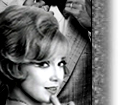 |
|
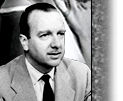 |
|
 |
|
 |
|
 |
|
 |
|
 |
|
 |
|
 |
|
 |
|
 |
|
 |
|
 |
|
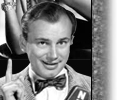 |
|
 |
|
 |
|
 |
|
 |
|
 |
|
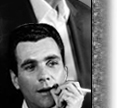 |
|
 |
|
 |
|
 |
|
 |
|
 |
|
 |
|
 |
|
 |
|
 |
|
 |
|
 |
|
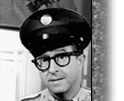 |
|
 |
|
 |
|
 |
|
 |
|
 |
|
 |
|
 |
|
 |
|
 |
|
 |
|
 |
|
 |
|
 |
|
 |
|
 |
|
 |
|
 |
|
 |
|
 |
|
 |
|
 |
|
 |
|
 |
|
 |
|
 |
|
 |
|
 |
|
 |
|
 |
|
 |
|
 |
|
 |
|
 |
|
 |
|
 |
|
 |
|
 |
|
 |
|
 |
|
 |
|
 |
|
 |
|
 |
|
 |
|
 |
|
 |
|
 |
|
 |
|
 |
|
 |
|
 |
|
 |
|
 |
|
 |
|
 |
|
 |
|
 |
|
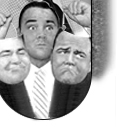 |
|

Lost Television: Not Completely Lost
by Phil Gries
|
Incredibly, lost broadcasts from
the 1950's and 1960's total over 200,000 television hours. However,
in some cases the audio track does remain as a broadcast record of a
telecast which today no longer survives in any other form.
Thanks to a very small group of TV Audio Aircheck recorders, a number of classic and not so classic television programs survive today only as audio. from the 1950's '60s, and '70s (May take 20 seconds or more to load) Let us go back four decades and examine what created this phenomenon. In issue #785 of TV Guide dated April 13-19, 1968, it was reported that, to date, 140 million television sets had been manufactured, 800 television stations had been developed and over 50 million hours of television broadcasts had been aired. On a 24-hour-a-day schedule, it would take 6,000 years to view all of television's first 21 years of broadcasting (1947-1967). Incredibly, more than half of all these broadcasts, many of them telecast live or on videotape, have been "lost", destroyed, or have deteriorated beyond repair. Back in TV's early days, few people saw much value in keeping copies of programs from such a disposable medium as television. Through the 1960's, television preservation was an arcane pursuit. It was not until the 1970's, as the television industry approached it's silver anniversary, that serious archival interest in television program preservation began to surface. On October 19, 1976, the U.S. Congress officially recognized television as an important aspect of American culture, advocating the need to create a permanent record of TV and to allow for it's access to historians and scholars without causing copyright infringement. Also, one month later, in November of 1976, The Museum of Television and Radio, in New York, opened its doors to the public. Their objective was to acquire a bit of everything that the broadcasting industry had to offer. Acquisitions came from the networks, private collectors, industry personalities and other sources. Television series photographed on 16mm and 35mm film were the easiest to obtain. Unlike reusable videotape, film prints could not be reused for new programming and acetate film stock, used in the 1950's, was more stable than it's volatile nitrate counterpart. Therefore, a large percentage of filmed television, series, specials and documentaries from the 1950's and 1960's exist today in excellent viewing condition. Live programs telecast during the 1950's had to be kinescoped (16mm or 35mm film camera recording a television monitor as the live telecast aired) in order for these broadcasts to be preserved. This technique was expensive and primarily done for delayed West Coast transmission. Also, kinescopes of certain programs such as the 1952 World Series, originally broadcast live, were sent to Korea for our servicemen to view at a later date. While the picture quality is marginal for most of these kinescope recordings, it is the only broadcast record of a specific live telecast. Only a modest percentage of good kinescopes survive from the first dozen years of live television broadcasting; most were discarded or misplaced after their delayed transmission or screening. In the late 1950's, the kinescope process was gradually replaced by videotape recording and playback transmission. The new era of magnetic tape television, marking the gradual end of black-and-white kinescope and color lenticular film, was implemented by NBC in the spring of 1958 at their Burbank studios in California. Initially, two inch quad videotape was somewhat unstable, and editing such material was a slow and awkward process. It was also expensive to purchase, and two inch quad required a lot of space for storage due to size. There was very little profit preserving network and especially local, live and videotaped programming. Many original and duplicated tapes were discarded, misplaced and erased by uncaring executives and employees at television broadcast stations and production companies. After a television broadcast had initially aired, and possibly had its telecast rerun, there was little incentive to hold on to such original videotape material when it could be reused for new programming. Most talk shows, news, public affairs, live and videotaped interviews and sports broadcasts aired only once and were never seen again. With the exception of 1940's programming and 1950's daytime programming, these live and videotaped broadcasts, from 1958 through the 1960's, are the telecasts most "lost" and most scarce of all in television's broadcast history. Practically all the sample television programming that has survived from the late 50's and early 60's have come from the archives of the CBS, NBC, and to a lesser extent from the ABC television networks. Even the network archives kept only a fraction of all their broadcasts and many of these, through the 1960's, were eventually discarded, erased, destroyed, or misplaced. In some rare instances, personal requests to record a program or to dub a videotape by industry professionals were fulfilled. But it was rare when independent local stations kept copies of their live/videotaped programs. Economics came first. Tape was reused over and over again and hundreds of thousands of broadcasts were never seen or heard again, after their initial airing. Thus, if it weren't for a handful of professional and amateur recordists who personally recorded TELEVISION AUDIO, thousands of lost TV shows would be completely lost forever. When only the audio aircheck remains, we have an opportunity to at least be in touch with our nostalgic past, our memories, the political and social events of our time and our heritage. It is a form still revealing and memorable; it is illustrated radio with the visuals left to our imagination. Still, the efforts of these recordists, for the most part, continue to go unnoticed and unrecognized by the general public and by most archival broadcasting museums. As the 21st century unfolds, most of our early surviving kinescopes and videotapes will be accounted for and circulated. Perhaps then, inquisitive minds will at last come to recognize and revere the treasures which have been and remain overlooked... the audio track links to a bygone era representing the golden and silver age of television. |
Top
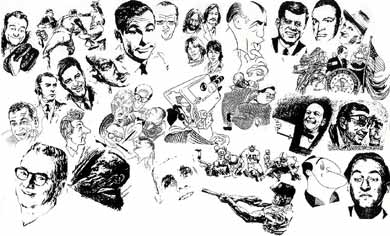
To search for a broadcast, please e nter a
Show Title, Personality, Airdate, Archive ID, Keyword or Phrase into the Search textboxes at the top of the page:
PRESERVING & ARCHIVING THE SOUND OF
LOST & UNOBTAINABLE ORIGINAL TV
(1946 - 1982)
"Preserving & disseminating important TV Audio
Air Checks, the video considered otherwise lost."
-Library of Congress
Vintage Television Audio Broadcasts
22,000 Titles - 20,000 Hours
Home | About us | Order Inquiry | TV Categories | Personality Index | Title Index
Archival Television Audio, Inc.
www.atvaudio.com
209 Sea Cliff Avenue
Sea Cliff, New York 11579
Attention: Phil Gries
|
Founder & Owner Phil Gries Director of Photography www.philgries.com |
"Any Inquiries"
Phone/Fax: (516) 656-5677
Email Us: gries@atvaudio.com
© 2002-2024 Collector's Choice Archival Television Audio, Inc.
All Rights Reserved.

Unique Visitors:
Visitor Counter
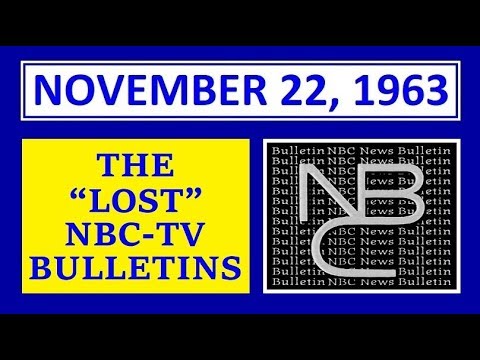
UNIQUE in the WORLD audio air check recordings by 20-year-old Phil Gries, archiving the first, second bulletins & initial NBC TV broadcast coverage of President John F. Kennedy's assassination. Not recorded by NBC or any other resource in the country.
- A&E TV SPECIAL - host Edwin Newman (11-22-1988) introduction - 25th Anniversary of JFK Assassination.
- NBC TV "Lost Don Pardo Bulletins" & Lost first 3:53 TV coverage (Phil Gries unique broadcast audio recording) unable to be video tape recorded or audio tape recorded by NBC.
- Phil Gries telephone interview with Don Pardo (5-14-1998).
- 10 minutes.
LIVE with PHIL GRIES
ARCHIVAL TELEVISION AUDIO - WEBINAR
Each Friday Evening from 7:30 - 8:30PM EST.
 RETRIEVABLE LOST MEMORIES
RETRIEVABLE LOST MEMORIESORDER
Vintage Television Audio Broadcasts
22,000 Titles
20,000 Hours
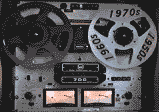
Testimonials
The Senior Moments Radio Broadcast show interviews Phil Gries about his Archival Television Audio archive and his restored documentary film, "Harlem School 1970"

Glen Cove Senior Center
January 23, 2018
 Phil Gries' recordings
Phil Gries' recordingsof vintage sounds
never grow old.

Hear Phil Gries on

Hear Phil Gries
and Joe Franklin
on Bloomberg Radio
(April 28, 2012)


Home
Contact Us
ORDER INQUIRY
Hear Phil Gries on
National Public Radio
Archive Profile

ALL THINGS CONSIDERED
"Raising Ali"
(May 22, 2015)
Hear Phil Gries
on Sports Talk:
August 25, 2019
June 26, 2016
August 9, 2015




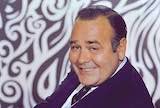
 Archive
ArchiveSearch Library
TV Categories
Personality Index
Title Index
ARSC Journal Article Publication: Lost TV Programs (1946-1972)

Hear Phil Gries presentations at ARSC (Association for Recorded Sound Collections) 2001, 2008, 2009, 2010, 2011, 2014.
Audio Samples

(Audio files may take 20 seconds or more to load)
1960's TV
Audio Player
103 Broadcast Samplers
AudioAndText™
Content
(Browser needs to
allow Flash content)
Content Collections
JFK Assassination
Coverage
NPR Walter Cronkite Essays
Civil Rights Movement (1956-1968)
Space Exploration (1956-1972)
Vietnam War
(1961-1975)
[854 Entries]
Company Information
About Us
Descriptions
Access
Fees
Archive
TIME-LINE
Accreditation
Master Materials
Research
Copyrights
Restricted Archive Titles
Catalogs
Related Materials
TV History
Lost Television
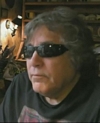
Jose Feliciano, at 70, listening to his FIRST TV variety show appearance (Al Hirt: FANFARE), telecast on July 17, 1965, when he was 19 years old.
TV Audio:
Rare & Valued
When TV Variety
Was King
This Anniversary Day
In Television History
ARSC/IASA London Conference: Why Collect?

News 12 Long Island
Live Television Profile:
Archival Television Audio, Inc
CAPTURED LIVE: CULTURES OF TELEVISION RECORDING AND STORAGE, 1945-1975

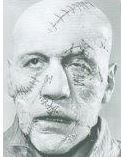
NBC MATINEE THEATER
FRANKENSTEIN
NBC TV - Feb. 5, 1957
8:23 min. excerpt
Phil Gries TV Audio Archive
Profile Segment
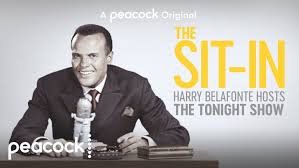
Harry Belafonte Hosts
The Tonight Show
5:21 min. excerpt
Password: Phil
(Case Sensitive)